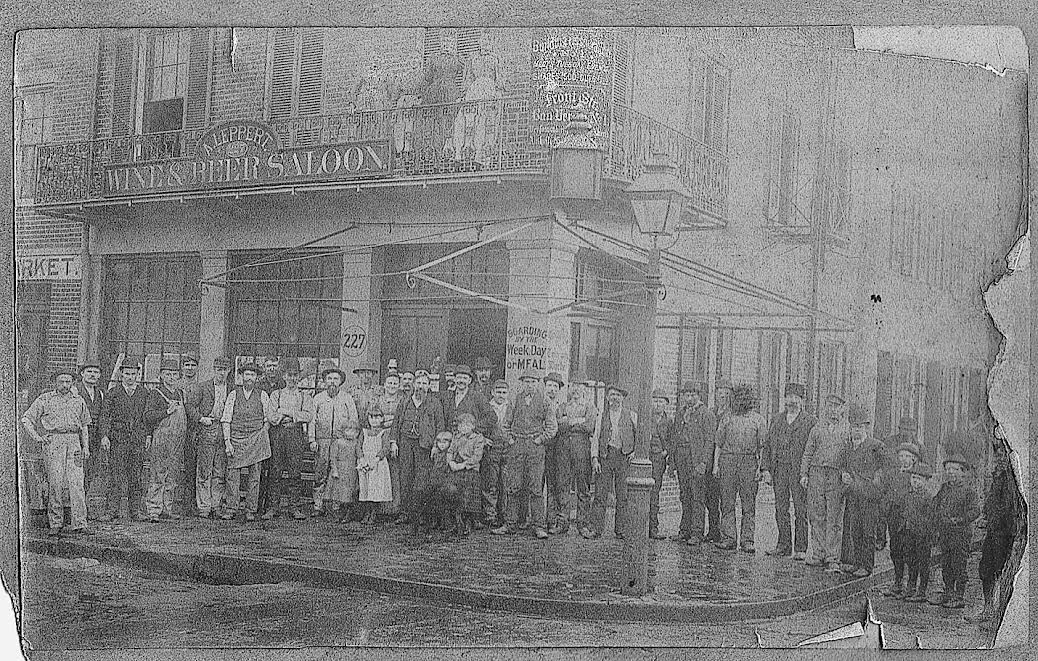- DOD’s Office of Strategic Capital accepting loan applications as it looks to lend up to $984M
- What to Know About Beast Games’ Controversial Sweepstakes Partner MoneyLion
- What You Need to Know About Your Student Loans Before Trump Takes Office on Jan. 20
- Bill Cosby facing second NYC foreclosure on $17.5 million loan
- SBA 504 Program Expands to Help More Small Businesses Access Capital
By Don Heinrich Tolzmann
Special to NKyTribune
Bạn đang xem: Our Rich History: Bau-Vereine – the German roots of Building & Loans; meeting in saloons, saving for homes
Thriftiness is a trait Germans are well known for, as it was considered a virtue, and wastefulness a vice. This is reflected in the large number of banks in the Greater Cincinnati area, many of which trace their roots to Bau-Vereine: building and loan associations.
Such associations usually met at a local saloon, and once a week members would deposit their savings with the treasurer.
Xem thêm : US Student Loan Forgiveness in 2024: Are You Eligible? Check Details & Potential Savings
Alvin F. Harlow commented in his book The Serene Cincinnatians (1950) that visitors to the area were often struck by how few apartment buildings there were: “fewer than in any other city of its size.” This reflected the German heritage goal of owning a home. In compiling my Over-the-Rhine Tour Guide (2011), I noticed that there were a number of apartment buildings, also known as tenements. However, for the most part there were homes, many built in the Italianate architectural style, usually solidly constructed brick buildings, as that is what Germans preferred.
Germans might take on apartment living for their families, but only while they could save enough to build or buy a home. This was part of the goal of attaining success in America. It also explains why there were so many B&Ls in the Greater Cincinnati area, which were founded and supported by Germans. It also explains why I have often gotten calls from banks that have gone through their records and discovered that they were in German, and wanted to know what information they contained.
By 1870, there were 26 B&Ls in Cincinnati alone, and by 1950 there were 260 in Hamilton County and 34 in Northern Kentucky. In the following decades some were acquired and merged into other banks, but others still remain. Due to the anti-German hysteria of World War I, names were anglicized, and simply called “building & loans,” or “savings & loan banks,” but their origins were unmistakably German. One example of a Bau-Verein that came to my attention several years ago was the Front Str. Bau-Verein in Cincinnati.
A descendant of Adolph Leppert shared a picture with me of the A. Leppert Wine & Beer Saloon that belonged to his family before Prohibition. It provides a good example of a local B&L.
Xem thêm : C.F.P.B Sues Unit of Warren Buffett’s Berkshire Hathaway Over Risky Mortgages
It was located at the southeast corner of Front and Central Avenue in Cincinnati, and was one of about 1,800 saloons in town. I noticed there was a German sign to the right of the saloon’s sign, but it was illegible. But, with the help of a magnifying glass, I found that it read: “Front Str. Bau-Verein No. 1.” So, Leppert’s also was the home of a Bau-Verein.
Bau-Vereine usually met at saloons, and this one met on Wednesday evenings at Leppert’s, so that workers could deposit savings with the society’s treasurer, with the goal of saving enough to build or buy a home. Saloon owners kept these funds for the societies, and eventually some of them developed into brick-and-mortar building and loan banks.
So, thriftiness is not just a recognizable German heritage trait, but also one whose influence is clearly reflected in the many building & loans, and savings & loans, that flourished in the Greater Cincinnati area. They contributed greatly to the housing industry by means of the construction of many homes that were built on both sides of the Ohio River, thus providing another example of one of the many subtle influences of the German heritage.
Don Heinrich Tolzmann is a nationally and regionally noted historian of German Americana. He has written and edited dozens of books, and contributed to many others, including The Encyclopedia of Northern Kentucky. Paul A. Tenkotte, PhD is Editor of the “Our Rich History” weekly series and Professor of History at Northern Kentucky University (NKU). He can be contacted at [email protected]. Tenkotte also serves as Director of the ORVILLE Project (Ohio River Valley Innovation Library and Learning Engagement). For more information click here.
Nguồn: https://marketeconomy.monster
Danh mục: News

